Credit cards are a convenient payment option that can offer many benefits but also come with various fees and charges. One of the most important things to understand when using a credit card is the purchase rate. This term refers to the interest rate applied to purchases made on your credit card. Understanding what this rate means and how it works can help you make better financial decisions and avoid unnecessary expenses.
In this blog post, we’ll dive into everything you need to know about credit card purchase rates in Canada – from what they are, how they’re calculated, and even tips on finding the best purchase rates for your needs!
What is a Credit Card Purchase Rate?
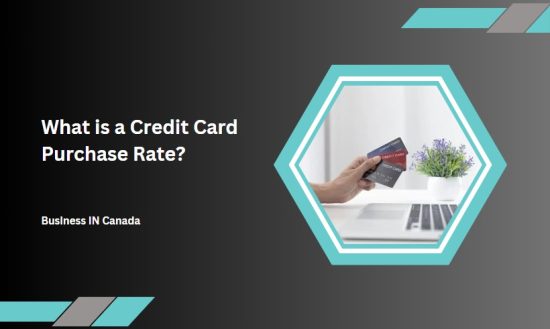
A credit card purchase rate is the interest charged on any purchases made using a credit card. This rate can vary depending on several factors, including your credit score and your card type. The purchase rate applies to all purchases made with your credit card, from groceries to clothing.
It’s important to note that the purchase rate is just one of several costs associated with using a credit card. Other fees may include annual, late payment, and cash advance fees. These charges can add up quickly if you’re not careful about how you use your credit card. To avoid paying high-interest rates on your purchases, it’s essential to pay off your balance in full each month or make more than the minimum payment required by the issuer.
Doing so reduces the amount of interest accrued over time and saves money in the long run. Understanding what a credit card purchase rate is and how it works is crucial for anyone who wants to use a credit card responsibly. With some knowledge and careful planning, you can use this financial tool effectively while avoiding unnecessary expenses!
What is the Annual Percentage Rate?
Annual Percentage Rate (APR) is a term used to describe the annual interest rate charged on credit card balances. It includes the interest charges and any fees associated with the account, such as annual fees or balance transfer fees. When you apply for a credit card, paying attention to its APR is important because it can greatly affect your finances in the long run.
A high APR means that you’ll pay more interest charges each month, making it difficult to pay off your debt. It’s worth noting that different types of APRs apply depending on how you use your credit card.
For example, cash advances usually have a higher APR than purchases, so it’s important to read through your credit card agreement carefully and understand what rates will apply in different situations. Understanding the Annual Percentage Rate and how it works is essential for anyone who wants to manage their finances wisely and avoid getting trapped by high-interest debt.
Types of Purchase Rates
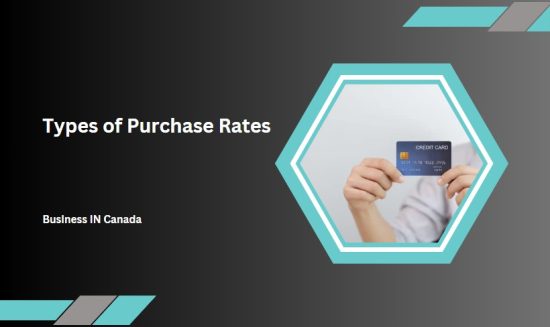
Credit cards come with different types of purchase rates, and it’s important to understand each one before deciding which card is right for you. One type of purchase rate is the introductory rate, which offers a lower interest rate for a limited time period. This can be beneficial if you plan on making large purchases and need some time to pay them off without accumulating high-interest charges.
Another type of purchase rate is the variable rate, which fluctuates based on changes in the economy or at the credit card issuer’s discretion. It’s important to keep an eye on this type of rate because it could increase at any moment and impact your ability to make payments. There are fixed-rate credit cards that offer a consistent interest charge over time.
While these may not have as low an introductory or promotional period as other types of credit cards, their stability can be appealing if you’re looking for consistency when budgeting your finances. Understanding each type of purchase rate and how they affect your finances is crucial when choosing a credit card that meets your needs.
Introductory Rates
When it comes to credit card purchase rates, introductory rates are something that many people find attractive. Credit card companies generally offer these types of rates for a limited time when you first sign up for a new card.
During the introductory period, which can last anywhere from six months to a year or more, you’ll enjoy a lower interest rate on your purchases. This means that any balance you carry on your account during this time will accrue less interest than it would otherwise.
However, it’s important to note that your rate will likely increase significantly once the intro period ends. Make sure you read the fine print and understand exactly how long the intro period lasts and what rate you can expect once it’s over.
Additionally, some intro offers may require certain conditions to be met in order to qualify – such as making a minimum number of purchases each month or keeping your balance under a certain limit. While an introductory offer might seem like an appealing way to save money on interest charges in the short term, it’s important to weigh all of the factors before signing up for any new credit card.
Variable Rates
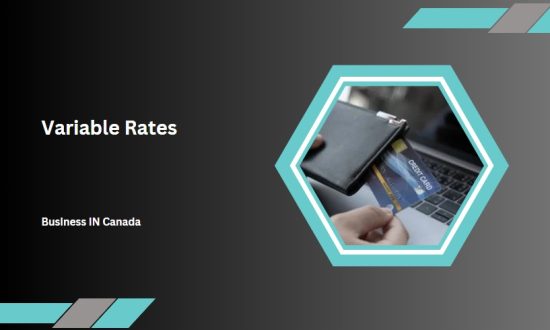
Variable rates are another type of credit card purchase rate that you should be aware of. Unlike introductory rates, variable rates can fluctuate over time depending on a variety of factors, such as market conditions and the lender’s discretion.
Credit card companies usually base their variable rates on an index such as the prime rate or LIBOR. If these indexes increase, your interest rate will also go up accordingly. On the other hand, if these indexes decrease, your interest rate may also go down.
It’s important to note that variable rates can change at any time without notice. This is why it’s crucial to understand how they work and monitor your credit card statements regularly so you’re not caught off guard by sudden changes in your interest charges.
If you’re considering a credit card with a variable rate, make sure to read the fine print carefully and ask questions about how often they adjust their rates and by how much. It’s always better to be informed upfront than surprised later on when your bill arrives.
What is a Good Purchase Rate on a Credit Card?
When it comes to credit cards, the purchase rate is an essential factor that determines how much interest you will have to pay on your purchases. But what exactly is considered a good purchase rate?
There’s no fixed answer as it varies from person to person and their financial situation. However, generally speaking, a good purchase rate can range between 12% – 18%. If you have an excellent credit history or are willing to opt for high-tier credit cards with annual fees, then you may even qualify for lower rates.
It’s important to note that having a low-interest rate isn’t everything when choosing a credit card. Other factors, such as rewards programs and perks, should also be taken into consideration before making a decision. Finding the right balance between interest rates and benefits depends on your needs and priorities. It’s always recommended that you thoroughly research different options before selecting one that suits your unique circumstances best.
In this highly competitive market of credit cards offering varying features and benefits, we suggest doing some homework about which card offers value-added services at a reasonable cost & benefit ratio along with favourable purchase rates that would be ideal for an efficient financial management system.
What is Cash Advance Rate on Credit Card?
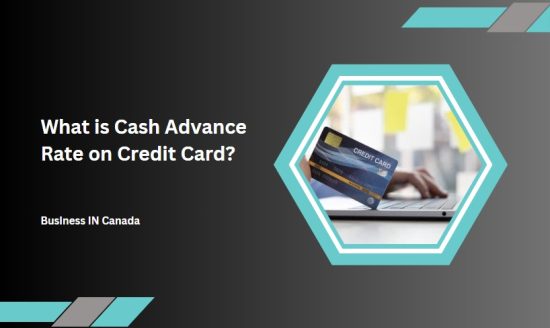
The cash advance rate is the interest rate that credit card issuers charge for withdrawing money from an ATM or bank using your credit card. It’s usually higher than the purchase rate; in some cases, it can be as high as 25% or more.
When you use your credit card to withdraw cash, you’ll not only have to pay a cash advance fee but also interest charges that start accruing immediately, unlike purchases made with a credit card, where you may have up to 21 days of grace period before interest starts accruing.
It’s important to note that cash advances on your credit card should be avoided unless it’s an emergency because of its high-interest rates and fees. If you’re struggling with finances, consider other options like borrowing from family or taking out a personal loan instead.
If you need to take out a cash advance, pay back the amount borrowed plus any associated fees as soon as possible. This will help minimize the amount of interest charged and prevent further debt accumulation.
How does Credit Card Interest work?
Understanding how credit card interest works is important for anyone who uses a credit card. When you make purchases with your credit card, the issuer will charge you interest on any unpaid balance that carries over from one month to the next.
Credit card issuers typically determine your interest rate based on several factors, including your credit score and payment history. The higher your score and the better your payment history, the lower your interest rate may be. When you receive your monthly statement, it will show you how much interest has been charged on any outstanding balances. If you carry a balance from month to month, this can add up quickly and make it more difficult to pay off what you owe.
Paying more than the minimum required amount each month can help reduce the amount of money that goes toward paying interest. It’s also important to watch out for fees that may be added if you miss payments or go over your credit limit.
Understanding how credit card interest works is essential for managing debt responsibly and avoiding unnecessary fees and charges.
Which Credit Card is Right for You?

Choosing a credit card can be quite overwhelming, given the numerous options available in the market. However, choosing one that fits your lifestyle and financial needs is necessary. The first thing you should consider when choosing a credit card is its purpose – whether for travel rewards, cashback or balance transfer.
If you are someone who travels frequently, then a travel rewards credit card might be the right choice for you. Such cards provide benefits like free flights, hotel stays, and discounts on car rentals and other travel-related expenses.
On the other hand, if you want to save money while spending, cashback credit cards are perfect for you. Cashback rates vary from 1% to over 5%, so make sure to pick one that gives high returns on categories where you spend most of your money.
For those struggling with debt repayment or planning to make some major purchases soon, balance transfer credit cards may help lower interest rates and fees associated with transferring balances between different accounts. Picking the right credit card depends on what works best for your individual situation. Always read through the terms and conditions carefully before applying!
Conclusion
When it comes to credit cards, understanding the purchase rate is crucial for managing your finances. In this article, we have explored a purchase rate and how it affects your balance. We’ve also discussed the different types of purchase rates available in Canada and what makes a good one.
If you’re looking for a credit card that suits your needs, consider researching different options based on their purchase rates and other features, such as rewards programs or annual fees.
Remember that while having access to credit can be beneficial, using it responsibly and avoiding carrying a balance whenever possible is important. This will save you money on interest charges and help improve your overall financial health.
FAQ – What is a Credit Card Purchase Rate in Canada?
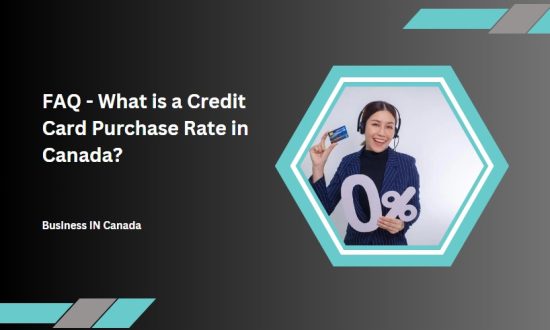
What does a 19.99% purchase rate mean?
The term “purchase rate” on a credit card refers to the interest rate charged on purchases made with that card. If a credit card has a purchase rate of 19.99%, then any balance carried from month to month will accumulate interest at this percentage.
This means that if you carry a balance of $1,000 over the course of one year, you can expect to pay approximately $200 in interest charges alone. That’s why it’s important to understand your purchase rate and how much it could cost you in the long run.
It’s worth noting that not all credit cards have the same purchase rates. Some may offer lower rates for those with good credit scores or as part of introductory offers, while others may have higher rates for riskier borrowers.
Understanding your purchase rate is essential in managing your finances and avoiding debt traps. Be sure to read through all terms and conditions before applying for new credit cards to make informed decisions about which ones are right for your needs and budget.
What is the purchase rate for an RBC credit card?
The Royal Bank of Canada (RBC) is one of the largest financial institutions in Canada, offering a wide range of credit card products. When it comes to RBC credit cards, the purchase rate refers to the interest charged on purchases made using your credit card.
Like other credit cards, RBC has both variable and fixed purchase rates that apply to different types of transactions. The purchase rate for an RBC credit card can also vary depending on your financial situation and credit score. It’s important to remember that if you carry a balance on your RBC credit card, you’ll be charged interest on all purchases from the time they’re made until they’re paid off in full. This can quickly add up and make it difficult to pay off your debt.
To avoid paying high-interest charges on your RBC credit card purchases, it’s important to always pay off your balance in full each month. You may also want to consider using a low-interest or 0% APR introductory offer available for new customers with good or excellent credit scores.
Understanding how purchase rates work with an RBC Credit Card can help you better manage your finances, choose the right type of product when selecting a new one, or apply for additional benefits like cashback rewards programs or travel insurance options.
What is the average credit card purchase interest?
The average credit card purchase interest rate varies depending on the issuer and type of card. Generally, it ranges from 14% to 25%. However, some premium cards may offer lower rates or even introductory promotional rates as low as 0%.
It’s important to note that credit card companies calculate interest differently. Some use daily balance, while others use an average daily balance method. You should refer to your terms and conditions for specific details. Factors such as your credit score, income level, and payment history can also affect the purchase interest rate that you qualify for. Keeping a good credit score and consistently making on-time payments can help improve your chances of receiving a lower interest rate.
If you regularly carry a balance on your credit card, paying close attention to your purchase interest rate is crucial in managing debt effectively. Consider shopping around for different cards with more favourable rates or negotiating with your current issuer for better terms.
Understanding how purchase interest works and being mindful of the factors that impact its calculation can help you make informed decisions when using credit cards.
Is the purchase rate the same as the interest rate?
The terms “purchase rate” and “interest rate” may seem interchangeable, but they actually have distinct meanings when it comes to credit cards. The purchase rate is the interest charged on purchases made with the card, while the interest rate encompasses all types of charges, including purchases, cash advances, balance transfers and others.
It’s important for credit card users to understand this distinction because some cards may have different rates for various types of transactions. For example, a card may offer a low introductory purchase rate but then charge a much higher cash advance rate.
When comparing credit cards, be sure to look at both the purchase rate and any other applicable interest rates. Additionally, consider any other fees associated with using the card, such as annual fees or late payment fees. By understanding these nuances in credit card terms and features, consumers can make informed decisions about which cards best meet their needs.
How do you avoid purchase interest charges?
By understanding what a credit card purchase rate is and how it works, you can make better financial decisions when choosing the right credit card. Keep in mind that not all purchase rates are created equal, so it’s important to compare different cards before making a final decision.
If you want to avoid paying high-interest charges on your purchases, you can take some simple steps. One of them is paying off your balance in full every month by the due date. If available, you can also consider using a low-interest or 0% APR promotional offer. Keep track of your spending and payment due dates to avoid unnecessary fees or penalties. With these tips in mind, you can use your credit card wisely while avoiding unwanted debt and financial stress.










